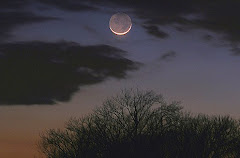 |
| Art by Jerome Van Valkenburg |
What is “active-observation”? the Taoists might call it “
Wu-Wei: effortless
effort, and Quantum theorists might call it the “
Observer Effect.” This is
when you can step out of the automatic, passive or reactive experiences of life and
bring in greater awareness and intention to enhance the experiences of observation and action.
I believe pretty much every aspect of life boils down to an
action or an observation. If you “observe” your daily routines, they can be
divided into actions/reactions or activities that are observed and recorded.
One involves outward expression that interacts with the
physical world, the other involves receiving and inwardly processing info
much like an antenna.(While receiving can be an act in itself, it can be done
passively—so observation can also be viewed as a passive action).
Adding the element of conscious awareness to either of these
two experiences transforms and enhances each one and provides a marble-colored
layer of “active-observation” to the mix.
HUMAN AUTOMATONS?
If ‘passively observing’ as we go through life, it can feel
like living alongside a conveyer belt, where all sensation becomes attuned to automated
and narrowly focused stimulation—It could be tantamount to apathetic mechanistic living or
a blind acceptance of whatever comes and goes in front of you.
Similarly, passive action—or action without the added
ingredient of active-observation resembles the experience of being the conveyor
belt or being on it. Many of our basic survival functions are passive actions,
and that’s a good thing. But in these cases we are either
preprogrammed to act in a certain way to fit a protocol, or we may be following the brain’s orders out of habit. Like passively observing, the defining feature is the same: a limited
cause-effect experience of life.
When reacting passively, it’s similar, except that the
reaction may be an automatic emotional response traced to a wound. New and old hurts,
resentments, and negative sensations (and a craving for thrills that get in their way) are a recipe for reactiveness. And in the
case of passive reaction, a habitual association with emotions may interfere with life and develop into an addiction as we become dependent on ego-driven feelings giving the orders.
ACTIVE-OBSERVATION and a MORE INTEGRATED LIFE
Active-observation could be one key to meditation. Indeed
it could be the act of bringing a meditative mindset into any interaction with the world. The
result is to move beyond survival, reaction and automation and into the realms
of creativity, play, inspiration, spontaneity, and healthy natural being. Where the experience of
whatever we are doing carries a natural flow of feedback between observer and observed
and between actor and action.
Someone who is experienced at active-observation, may
develop and refine these skills so they provide the basis for an integrated-existence.
Here, a person becomes so familiar with their own unique place as an agent of constructive
interplay with conscious observation and action that the two merge and synch guided by an
intent of creating more sustainable access to active-observation. Perhaps this integrated state might
even begin to wire a person to develop higher brain functions and bring forth Lao Tzu's state of "valuable, necessary, and long lasting service."
The Hindu’s believe that one ideal of life is to experience
Satchidananda, or to break out of the action-reaction cycle of karma and live-out
our true nature. Could they have considered “active-observation” and
integrated-existence as ways of unlocking our highest potential on this path?
Gaining an awareness of life's essential unity and learning to cooperate
with its natural flow and order enables people to attain a state of
being that is both fully free and independent and at the same time fully
connected to the life flow of the Universe - being at one with the Tao. From the Taoist viewpoint this represents the ultimate stage of human existence. ~ Ted Kardesh








No comments:
Post a Comment